Benito Amilcare Andrea Mussolini, famously known as Benito Mussolini, was an Italian political leader commonly known as a fascist European dictator.
He was credited with the inauguration of “fascism,”; a political ideology characterized by a dictatorship instead of democracy.
His family moved to Switzerland in 1902 because Italy lags in employment prospects. He started as a journalist for the Avanti newspaper and joined the Italian Socialist Party.
But Mussolini’s advocacy for military interventions had a detrimental impact on his political career as he got expelled from the party.
Initially, Mussolini entered social politics as a revolutionary figure; conversely, he turned down socialism for fascism and was listed amongst the world’s most ruthless dictators.
Here is the list of the top 10 most interesting facts about the world-famous dictator, Benito Mussolini.
What is fascism?
Content
Fascism is a mutant political ideology that promotes extreme racial nationalism, forcible suppression of opposition, and social regimentation headed by an autocratic ruler.
What is the pact of steel?
It is an agreement signed between Nazi Germany and Fascist Italy in 1939 to support each other.
Did Mussolini love literature?
Yes, Mussolini was fascinated by Victor Hugo’s Les Misérables and remained passionate about Hugo’s works.
Was Mussolini nominated for the Nobel Peace Prize?
Yes, Mussolini was nominated for the title in 1935 while attempting to invade Ethiopia.
10. Benito Mussolini was named after Benito Juarez
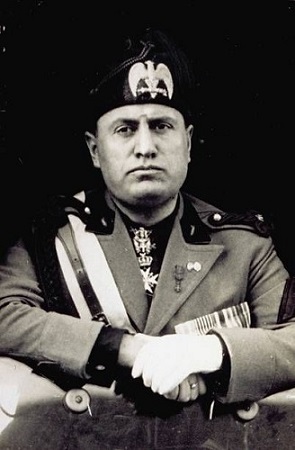
Benito Mussolini was born on 29 July, 1833 to Alessandro Mussolini and Rosa Maltoni. His dad was a blacksmith in Predappio, a town in north-central Italy. His mother was a Catholic school teacher who got married to a socialist.
Mussolini’s dad significantly influenced his son’s life as a social activist.
The dad and son duo shared a very close bond, so Alessandro played a significant role in shaping young Mussolini’s mind towards nationalism.
He introduced his son to revolutionary socialism at a very young age. He even taught Benito about political leaders he admired, for instance, Karl Marx.
Benito was named after Mexican President Benito Juarez. Likewise, His father also gave Amilcare and Andreas middle names after Amilcare Cipriani and Andrea Costa, whom his father adored.
At nineteen, Benito entered politics inspired by his father’s rational ideologies. Benito despised the Roman Catholic church just like his dad did, considering it an enemy that did Italy no good.
He believed monarchy should be abolished and Italians should be provided a good share of wealth apart from the Austro-Hungarian empire. But he followed the footsteps of an autocratic monarchy later in his life.
9. Violence had fascinated Benito Mussolini since his early days
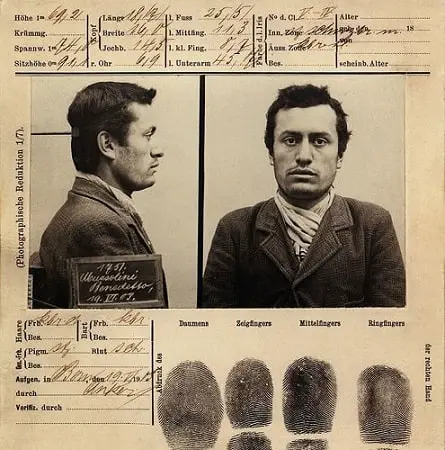
Mussolini never had a keen interest in schooling. His mom insisted he attend Catholic church schools, but poor behavioral attributes got him into trouble every time.
He had gained popularity for bullying and fighting with his fellow mates. Multiple occasions have showcased his violence, including stabbing friends, knifing a girlfriend in the arm, or pinching people at Church.
This very reason got him expelled from multiple religious schools. He was very arrogant, intolerant, and a rebel as a child. He never liked to accept defeat, even in games, and often initiated fights to resolve minute disputes.
This character eventually led him to introduce a policy that did not refrain from violence to gain power.
Despite this, he completed schooling in 1901and served as a schoolteacher in Switzerland to avoid military service in 1902.
8. Benito Mussolini was against the Church before favoring it
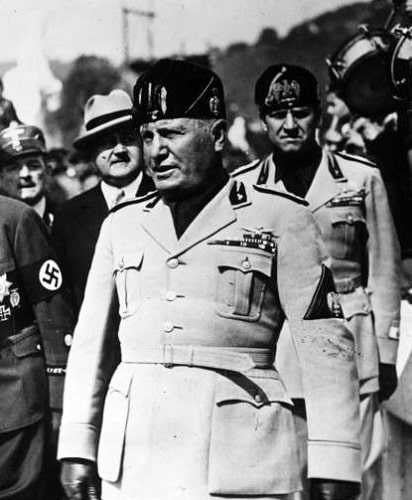
His father’s anti-church ideas drove Benito Mussolini as they believed the Roman Catholic church was not in favor of Italy. He referred to church priests as “black germs.”
Mussolini called himself an atheist who thought only idiots believed Bible stories. But after rising to power in 1922, he could not afford to anger the Church. So he started finding ways to please the Roman Catholic church.
He wanted to optimize the Church to appease his desire to turn Italy into a fascist state. Benito wanted to attract people to him, and the only way he could succeed was with the Church’s help.
To gain the trust, he baptized his children in 1923. In addition, Benito imposed strict laws against adultery despite having many mistresses himself.
He also closed down wine shops, local nightlife, and the use of contraception and abortion. Women were not allowed to work and had to look after the family.
He did every possible thing to attain the support of the Roman Catholic church. But they clashed over control of the education sector.
Thus, the Lateran Treaty between both parties in 1929 piqued Mussolini’s fame.
But Mussolini forbade Jews to have jobs and education just like the Nazis did. It bothered the pope, so he sent a letter to Mussolini out of protest.
7. Benito Mussolini coined the term “Fascism”
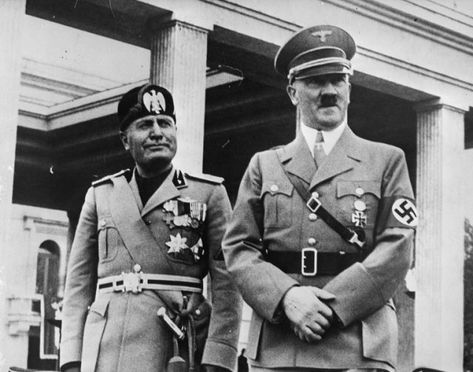
Benito Mussolini had the ideologies that he collectively called “fascism.” In 1919, he formed “the Fascist Party,” with ex-soldiers having common beliefs.
The army was known as “Black Shirts” based on their uniform. Black Shirts attacked people who followed communism and socialism and launched intimidation against their opponents.
Around 1924, Mussolini presented himself as the only man who could restore order; thus, King Victor Emmanuel asked him to form a government.
He was appointed as the state prime minister, but with his terrorizing armed force, Mussolini started shattering democratic policies in Italy. By 1925, he declared himself the dictator of the fascist state of Italy.
The party’s sole aim was to create a dominant rule to control the socioeconomic norms of the nation and transform it into an empire.
6. Mussolini started the “Battle for Land” policy
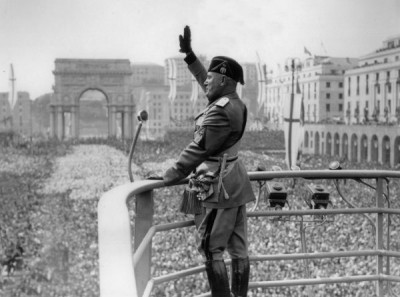
Cultivation introduced the Battle for the Land policy in 1928 to increase the availability of land for cultivation. Benito Mussolini started this policy to clear marshlands and enhance cereal production.
Another reason for initiating this policy was to reduce the risk of malaria since marshlands served as breeding sites for mosquitoes.
The Mussolini-led government passed rules for clearance of swaps followed by proper drainage management systems.
The land restoration campaign worked quite well as Italy reclaimed around 80,000 hectares of land between 1928-1938.
Furthermore, it also provided people with employment opportunities, and new cities like Latina and Sabaudina were also formed.
Destruction of marshy places and swaps also reduced health risks in marshy areas and exchanges. Thus, the Battle for land was considered successful.
5. The “Battle for Grain” policy
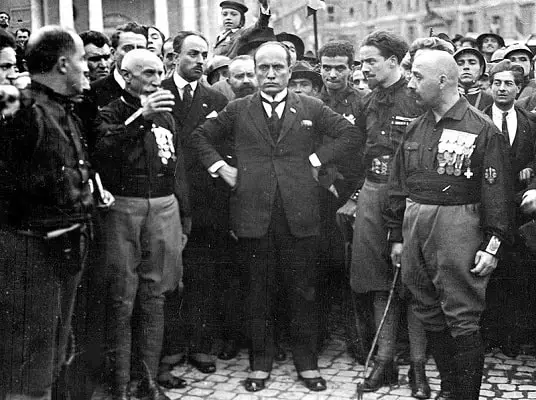
The Great Depression wave hit Italy around 1931, eventually leading to the rise of fascism. During this time, Mussolini undertook numerous developmental projects to stabilize Italy economically.
Italy suffered from a significant food shortage that called for a price hike. He knew that such a condition could consequently bring out dissent.
So, he declared the start of the Battle for grain to increase wheat grain production and balance out trade deficiency.
The campaign aimed to mitigate the export of foreign breeds and make Italy self-sufficient.
He introduced new agricultural techniques and built warehouses, mills, and grain stores.
There was a positive outcome of the policy as grain production had increased by 40% by the end of the 1930s after the expansion of cultivable lands by the Battle for land policy.
However, the yield of grains caused the loss of native Italian orchard fruits, cheese, wine, etc.
4. Adolf Hitler admired Benito Mussolini
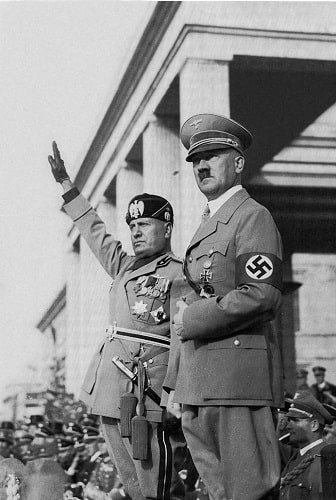
Adolf Hitler, the Nazi dictator, was inspired by Benito Mussolini, an Italian dictator. They both had similar perceptions of extreme nationalism, territorial expansions, and dictatorships.
Fascism was started earlier than Nazism, but both had some similarities. Hitler was much influenced by Mussolini’s march on Rome in 1922, after which he was appointed prime minister.
Hitler also replicated similar attempts during the Munich putsch, which failed miserably. Mussolini supported Hitler financially during the rise of the Nazis in the late 1920s.
He claimed that Germany and Italy shared a common link. The Pact of Steel was signed between Nazi fascists in 1939 and committed to helping each other during wars.
Later on, Hitler gained more power compared to Mussolini in the alliance. Mussolini and Hitler’s relationship was portrayed as a love-hate relationship since Mussolini was not very fond of Hitler.
3. Mussolini executed his son-in-law
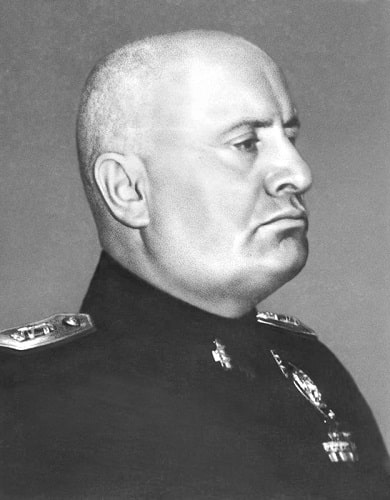
Galeazzo Ciano had married Mussolini’s eldest daughter Edda. He was also a fascist founder who ascended to become the foreign minister as a tribute to his loyalty to his father-in-law.
After the invasion of Ethiopia, Ciano became close to Mussolini and was likely to become his successor. But he suspected the pact of steel when Germany attacked Poland without consulting Italy.
When Germany invaded France, Ciano wanted to benefit from an alliance with victorious power, so he encouraged Italy’s war against the Allied power.
Sadly, after a miserable defeat with Greece, he debated a peace treaty with the Allies.
Mussolini got furious and expelled him from the post. He never forgave Ciano for treason against Germany. On January 11, 1944, Ciano was executed by Mussolini under Hitler’s order despite his daughter’s request to free her husband.
2. Benito Mussolini wanted to rebuild the Roman empire

Mussolini wanted to establish Italy as an influential nation in Europe, just as Rome had been in ancient days. He was determined to develop the country in every possible aspect, including socially, financially, and technically.
Progress could be observed for the first decade after his rise as Italy’s military force strengthened and agriculture prospered.
Simultaneously, Mussolini made many other reforms to convince the public that he wanted to rebuild Italy as a prosperous empire.
Neoclassical movements launched a reconstruction program known as the regulatory plan in 1926, inspired by neoclassical trends.
It included plans for urban clutter construction of wider roadways and new buildings, which required a vast sum placing an enormous burden on Italy’s economy.
Though Mussolini claimed that his regime followed the footsteps of Roman civilization, the reality was different. He used the authorities for personal motives and chose autocracy over democracy.
Territorial colonization was never the basis of ancient Rome. Furthermore, he allied with Germany and promoted antisemitism, which was not a part of building a Roman empire.
1. Benito Mussolini was a spell-binding orator
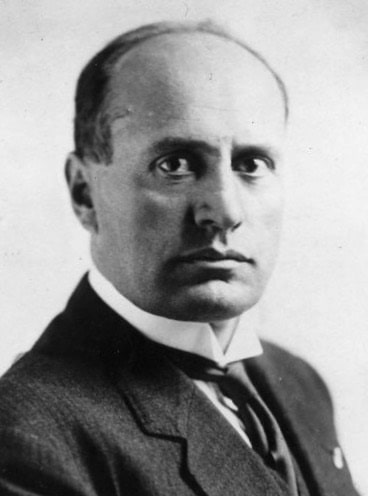
Mussolini indeed was a charismatic speaker who could manipulate people with his words. His sonorous tone captivated his audiences.
The fiery speaker could convince the spectators about his nationalism and territorial expansion plans. Despite malicious facts, the way he presented his words was impressive.
His choice of words was appreciable, along with appropriate metaphors. People were compelled to believe every promise made by how he delivered his speeches.
In addition, with his attractive physique, contradictory opinions, and effective gestures, he never failed to astonish the crowd.
The downfall of Benito Mussolini
King Victor Emmanuel removed Mussolini as prime minister after he proposed to transfer some of the power to the king. He was accused of the detrimental status of Italy.
Mussolini had no way left out of internal conflicts among partisans and Allied power invading German fences in northern Italy, so he fled.
When locals arrested him, he headed towards the Swiss border with Clara Pettaci. On April 28, 1945, they were executed two days after Adolf Hitler’s suicide.
People believed that Walter Audisio shot and hanged him; however, the truth remained unknown.
Conclusion
A man who changed the basis of patriotism into an autocratic regime, Benito Mussolini played a crucial role in World War 2. He exercised suppressive powers on opponents, launched fascism, and even inspired Hitler.
His famous quote, “It is good to trust others but not do so much is better,” fits well with his actions. His followers blindly supported him but little did they know he was focused on fulfilling personal motives.
The determination to recreate Italy as ancient Rome also did some remarkable works. The building of schools, hospitals, uplifting agriculture, and trade remained in good books.
Despite all his mistakes, neo-fascists openly parade their liking for Benito Mussolini. There are still some Italians who idealize him.
